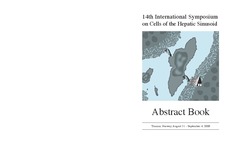| dc.description.abstract | Background:
During infections, polymorphonuclear neutrophilic granulocytes (PMN) are mobilized from their bone marrow stores, travel with blood to the affected tissue, and kill invading microbes there. The signal(s) from the inflammatory site to the marrow are unknown, even though a number of humoral factors that can mobilize PMN, are well known. We have employed a standardized, non-infectious human model to elucidate relevant PMN mobilizers. Well-trained athletes performed a 60-min strenuous strength workout of leg muscles. Blood samples were drawn before, during and just after exercise, and then repeatedly during the following day. Cortisol, GH, ACTH, complement factors, high-sensitive CRP (muCRP), IL-6, G-CSF, IL-8 (CXCL8) and MIP-1β (CCL4) were measured in blood samples. PMN chemotaxins in test plasma was assessed with a micropore membrane technique.
Results:
About 5 hr after the workout, blood granulocytosis peaked to about 150% of baseline. Plasma levels of GH increased significantly 30 min into and 5 min after the exercise, but no increase was recorded for the other hormones. No significant correlation was found between concentrations of stress hormones and the subjects' later occurring PMN increases above their individual baselines. Plasma G-CSF increased significantly – but within the normal range – 65 min after the workout. IL-6 increased very slightly within the normal range, and the chemokines IL-8 and MIP-1β did not increase consistently. However, we found a significant increase of hitherto non-identified PMN-chemotactic activity in plasma 35, 50, and 60 min after the exercise. No systemic complement activation was detected, and (mu)CRP was within the reference range at rest, 5 h and 23 h after the exercise. After endurance exercise, similar findings were made, except for a cortisol response, especially from non-elite runners.
Conclusion:
Apparently, a multitude of humoral factors can – directly or indirectly – mobilize PMN from marrow to blood; some of the factors are, others are not known to be, chemotactic. Under different conditions, different selections of these mobilizers may be used. In the late granulocytosis after heavy, long-lasting exercise a number of factors thought capable of mimicking the granulocytosis of infectious diseases were apparently irrelevant. | en |


 English
English norsk
norsk


